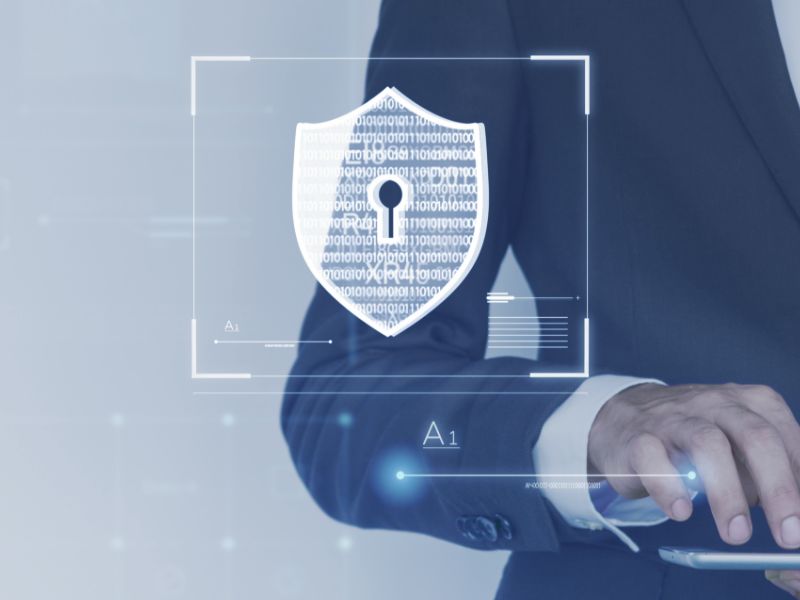Significance of Authentication and Authorization Mechanisms in App Development

Authorization and authentication mechanism for mobile apps is a critical element in the entire app development process.Jim Manico, the founder of Manicode Security, states, “Security is not an add-on feature. It needs to be a fundamental part of the design and architecture of any system.” In other words, security should be built into app development from the beginning, and authentication and authorization mechanisms should be a critical component of that security. With the growing importance of data privacy and security, implementing strong authentication and authorization mechanisms in app development is more important than ever.
In this glittering world of technologies, mobile app development is becoming more complex, and security threats are becoming more sophisticated. This is where authentication and authorization mechanisms come into play in ensuring the app security and the data they store.
According to a report by MarketsandMarkets, the global identity and access management market is anticipated to grow at a CAGR of 13.7% from 2022 to 2027, from an estimated value of USD 13.4 billion in 2022 to USD 25.6 billion by 2027. The figures are indicative of the rising significance of authentication and authorization in mobile app development.
If you are curious to know more about mobile application security then don’t stroll as we have got you covered. Here, we are going to discuss the fundamentals of authentication and authorization as well as the significance of each.
What is Authentication Mechanism?
Authentication (AuthN) is the process of verifying the identity of a user or system, typically through a combination of credentials such as a username and password. The username and password approach is the most common authentication mechanism for mobile apps, but there are many other methods available. For example, two-factor authentication (2FA) requires the user to provide an additional piece of information, such as a code sent to their phone, to gain access.
What is Authorization Mechanism?
Authorization mechanism for mobile apps is a process used to determine what actions a user or system can perform after their authentication is done. It is the process of granting or denying access to a resource or system based on the user’s identity, role, and permissions. There are several types of mobile app authorization mechanisms, including role-based authorization, attribute-based authorization, and rule-based authorization.
Now you are aware of what authentication and authorization mechanisms are, let’s take a look at the significance of both.
The Dynamic Duo: How Authentication and Authorization Secure Your App Development
Ready to take your app security to the next level? Learn how robust authentication and authorization mechanisms can unlock the full potential of your app
Protect your assets, control your access
It protects against unauthorized access and ensures the security for apps and integrity of sensitive data. According to a survey by Cybersecurity Ventures, the yearly cost of cybercrime is predicted to reach $10.5 trillion by 2025, up from $3 trillion in 2015. According to the report, the average time to detect a breach is currently 206 days, and the average time to contain a breach is 73 days, resulting in severe financial and reputational devastation to enterprises.
Authentication and authorisation coupled with tracking and auditing of user activity help to lessen the impact of security events. A live success example of continuous tracking and auditing of user activity is the use of SIEM solutions. The U.S. Department of Energy (DOE) uses a SIEM solution to monitor user activity across its network of national labs and facilities. Therefore, DOE has been able to detect and respond to potential threats in real-time, preventing significant data breaches and ensuring the integrity of sensitive information.
So the significance of organizations authentication and authorisation can detect possible risks and respond proactively by monitoring user behavior in real-time and reviewing logs of user activity, decreasing the time to discover and contain a breach.
Also Read: what are the security threats to implementing a mobility solution in the enterprise?
Prevent breaches before they happen
With several mobile app security best practices, there are still a lot of data breaches emerging for a myriad of reasons, including human error, system vulnerabilities, and targeted attacks. Organizations may reduce the risk of data breaches and ensure that only authorized individuals have access to sensitive data by establishing effective authentication and authorisation processes. So this includes from password-based authentication, two-factor authentication, to biometric authentication, and token-based authentication.
In addition to these mechanisms, organizations can implement other security for mobile applications such as encryption, firewalls, and intrusion detection systems to protect against data breaches. Security is crucial in today’s digital age as Tim Berners-Lee, inventor of the World Wide Web, emphasizes the value of data itself, noting that “data is a precious thing and will last longer than the systems themselves. This reinforces the necessity of protecting data from potential dangers, since it is a valuable asset that firms must secure to maintain their competitiveness and reputation.
Streamline your login process with ease
Single sign-on (SSO) is an authentication and authorization mechanism that enables users to access multiple applications or systems with a single set of credentials. SSO simplifies the login process for users, reduces the number of passwords they need to remember, and increases overall security by allowing for centralized control of user access. Here are some ways that authentication and authorization mechanisms integrate with SSO systems:
- Centralized Identity Management: It allows for centralized management of user identities and access control. This makes it easier for administrators to manage user access and permissions across multiple systems.
- Secure Authentication: Secure authentication protocols such as OAuth or OpenID Connect to ensure that only authorized users can access the system.
- Role-Based Authorization: Using role-based access control (RBAC), which grants or denies access based on the user’s role or position within the organization.
- Multi-Factor Authentication: MFA provides more than one form of authentication, such as a password and a biometric factor like a fingerprint or facial recognition.
- Audit Trail: SSO systems can be set to log user access and activity, giving a security and compliance audit trail.
Stay on the right side of the law
Authentication and authorization mechanisms have a major significance in custom mobile app development services helping organizations comply with regulatory requirements and mitigate legal risks. Several sectors are subject to stringent restrictions that require them to safeguard sensitive data, such as healthcare records or financial information, against unauthorized access.
For example the financial industry is bound by regulations such as the Payment Card Industry Data Security Standard (PCI DSS), which requires firms that handle credit card information to implement rigorous security measures. Authentication and authorization mechanisms are critical components of complying with these requirements and eliminating legal risks.
Shield your digital valuables
“Authentication and authorisation are two key layers of defense for protecting digital assets,” according to cybersecurity specialists at Palo Alto Networks. Authentication establishes the identification of individuals wanting to access digital assets, whereas authorization limits the actions that users can take once authenticated.”
Utilizing strong authentication systems, such as multi-factor authentication or biometric authentication, helps ensure that only authorized individuals have access to digital assets. Authorization systems such as role-based access control and attribute-based access control can limit the actions that users can perform on assets, lowering the risk of data manipulation or theft.
Elevate your user’s journey
Authentication and authorization mechanisms play a critical role in enhancing the user experience by providing secure and convenient access to digital assets. These mechanisms help to streamline the login process and ensure that users only have access to the information and resources they need to perform their job functions.
Also Read: why is it crucial for security to be included in all phases of the sdlc?
One successful example of the use of authentication and authorization mechanisms is the implementation of two-factor authentication by Google. In 2017, Google reported that after implementing two-factor authentication for their employees, none of them fell victim to phishing attacks that resulted in compromised accounts. This is a significant improvement from previous years, where many employees were falling for phishing scams and had their accounts compromised.
So, authentication & authorization mechanisms such as biometric authentication, two-factor authentication, SSO, RBAC, help to reduce the need for complex passwords and make it easier for users to log in securely.
Final words
Authentication and authorization mechanisms are essential components of app development that contribute to a secure and streamlined user experience. By implementing these mechanisms, developers can protect digital assets from unauthorized access, reduce the risk of identity theft and fraud, and improve user satisfaction by providing secure and convenient access to resources.
To ensure the dependability and integrity of applications, we at Finoit use industry-standard security best practices as well as a comprehensive security testing strategy. We are firm believers that mobile app development is all about combining innovation and creativity with a secure user experience. Our extensive testing procedure and skilled mobile development specialists work hard to give you the most secure and dependable mobile applications.
Need Help With
App Development?
- Proven
- Transparent
- Dependable


